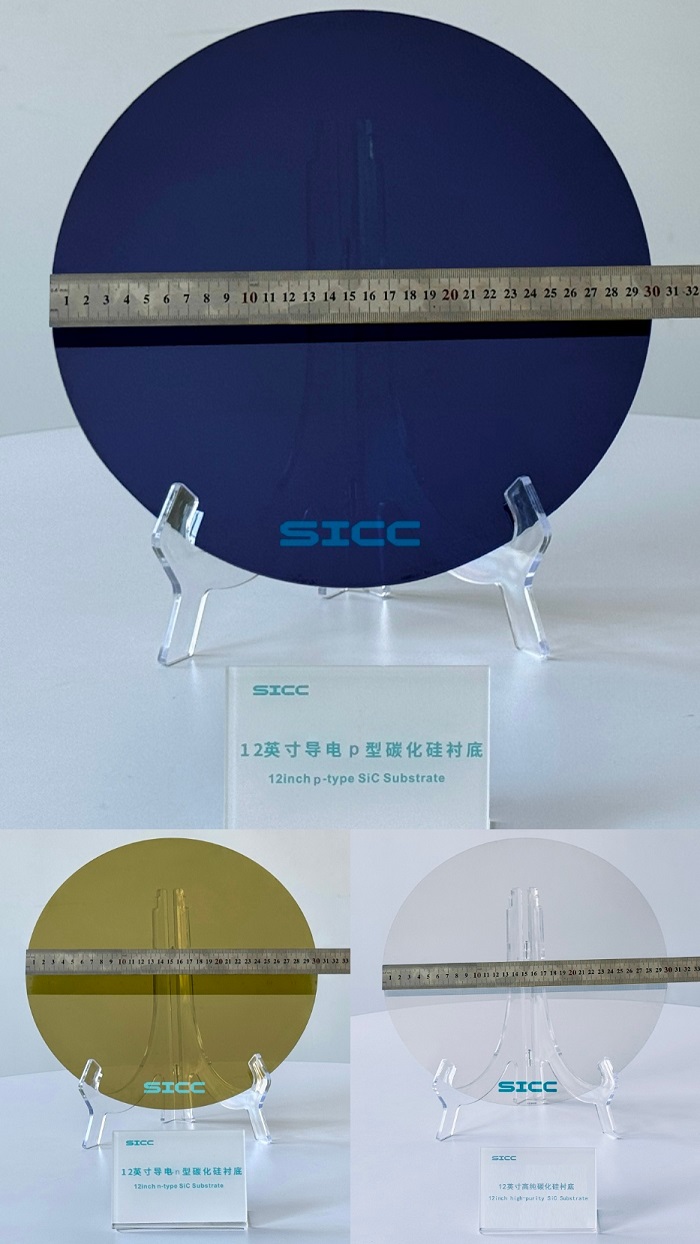

Driven by the dual forces of the new energy revolution and the reconstruction of the global industrial chain, the third-generation semiconductors with silicon carbide at their core are undergoing a "critical point transition" from the stage of technical breakthroughs to the outbreak of the market.
According to the data in the report by the international authoritative institution Yole, the global market size of silicon carbide power devices is expected to increase from 1.09 billion US dollars in 2021 to 6.297 billion US dollars in 2027, with an average annual compound growth rate of 34%. It is worth noting that SICC took the lead in launching a full range of 12-inch silicon carbide substrate products, which indicates that silicon carbide will demonstrate extremely broad application prospects in the field of high voltage and high power, and the upsurge of the silicon carbide industrial chain is expected to continue.
The Power Grid May Open Up an Incremental Market Worth Hundreds of Billions for the Silicon Carbide Industry
With the continuous growth of the global demand for energy efficiency and high-performance electronic devices, from electric vehicles to 5G communication base stations, from smart grids to photovoltaic energy storage systems, from industrial automation equipment to data centers, driven by the upgrading demands of these related industries, the application fields of silicon carbide devices are constantly expanding.
China's energy resources and electricity load present a typical pattern of "reverse distribution": The western and northern regions concentrate more than 80% of the country's wind energy and solar energy resources, while the eastern coastal regions consume more than 70% of the country's electricity load. There is a huge gap between the transmission capacity of the existing power grid and the demand for new energy consumption.
In China's energy strategic layout of "transmitting electricity from the west to the east", the ultra-high voltage (UHV) power grid plays a crucial role as the main artery of power transmission. Recently, Qiu Yufeng, Chairman of the Power Electronic Devices Committee of the Power System of the Chinese Society for Electrical Engineering, said in an interview with the central media "Economic Daily", "As a mature third-generation semiconductor material, it is an inevitable trend for silicon carbide to replace the current silicon-based materials. There will be two waves of application of the silicon carbide industry. The first wave is in the electric vehicle field, and the second wave is in the power grid field. It is certain that the demand for silicon carbide in the power grid will be comparable to that in new energy vehicles."
Yang Fei, Deputy Chief Engineer of the Power Electronics Institute of China Electric Power Research Institute of State Grid, said that the application of silicon carbide devices in the power grid is still in the demonstration project stage. With the continuous increase in the penetration rate of the silicon carbide industry in new energy vehicles, smart grids, etc., this market demand is expected to be rapidly unleashed. "With the integration of distributed power sources into the distribution network and the formation of an active distribution network, power electronics technology will become a necessary requirement for the new power system. Once it becomes a necessity, the demand for silicon carbide devices in the power grid will experience a significant increase in magnitude compared to the current situation."

It is reported that the development of kilovolt-kilovolt-ampere-level silicon carbide devices is accelerating. After sample development is achieved in the coming years, they will gradually enter commercial mass production. By then, domestic silicon carbide devices are expected to fully cover the high-voltage power transmission field, promoting the construction of the new power system through the "two-way support" of production capacity and technology.
Data from Yole also shows that by 2029, the global market size of silicon carbide power devices will reach $9.873 billion, among which the power supplies for AI computing power and smart grids will become incremental markets worth hundreds of billions.
SICC Empowers Industry Breakthroughs with Cutting-edge Technology
Currently, single-polar MOSFET devices based on mass-produced n-type silicon carbide substrates are mainly used in medium-voltage applications ranging from 600 to 1200V. For ultra-high voltage systems requiring a breakdown voltage of over 10kV, bipolar IGBT devices fabricated on p-type silicon carbide substrates have significant application potential. Additionally, SiC IGBT modules based on p-type substrates can reduce the number of series devices by 50% and lower the losses of converter valves by more than 40%. This fundamental performance improvement can save over 100 million kilowatt-hours annually for a single ultra-high voltage direct current line.
China has made significant progress in the field of n-type silicon carbide substrates. However, p-type substrates, due to their unique doping processes and technical barriers, are still in the early stages of industrialization.
At the SEMICON China 2025 exhibition, SICC comprehensively showcased its 6/8/12-inch silicon carbide substrate product matrix, including 12-inch high-purity semi-insulating silicon carbide substrates, 12-inch conductive p-type, and 12-inch conductive n-type silicon carbide substrates.
SICC has achieved a series of breakthroughs in key technologies such as p-type heavy doping and large-size silicon carbide substrate fabrication, and has firmly grasped the entire technology chain, including crystal growth, defect control, processing and testing, and component self-production.
As the silicon carbide industry fully enters the "12-inch era", silicon carbide devices will experience rapid development in clean energy applications such as photovoltaic storage, 5G communications, and high-voltage smart grids. SICC empowers the industry to break the monopoly of foreign enterprises in the core components of ultra-high voltage systems, solve the "bottleneck" problem, achieve complete autonomy in core ultra-high voltage components, provide critical "hard support" for China's energy revolution, and realize the transformation and upgrading of the power system under the "dual carbon" goals.

